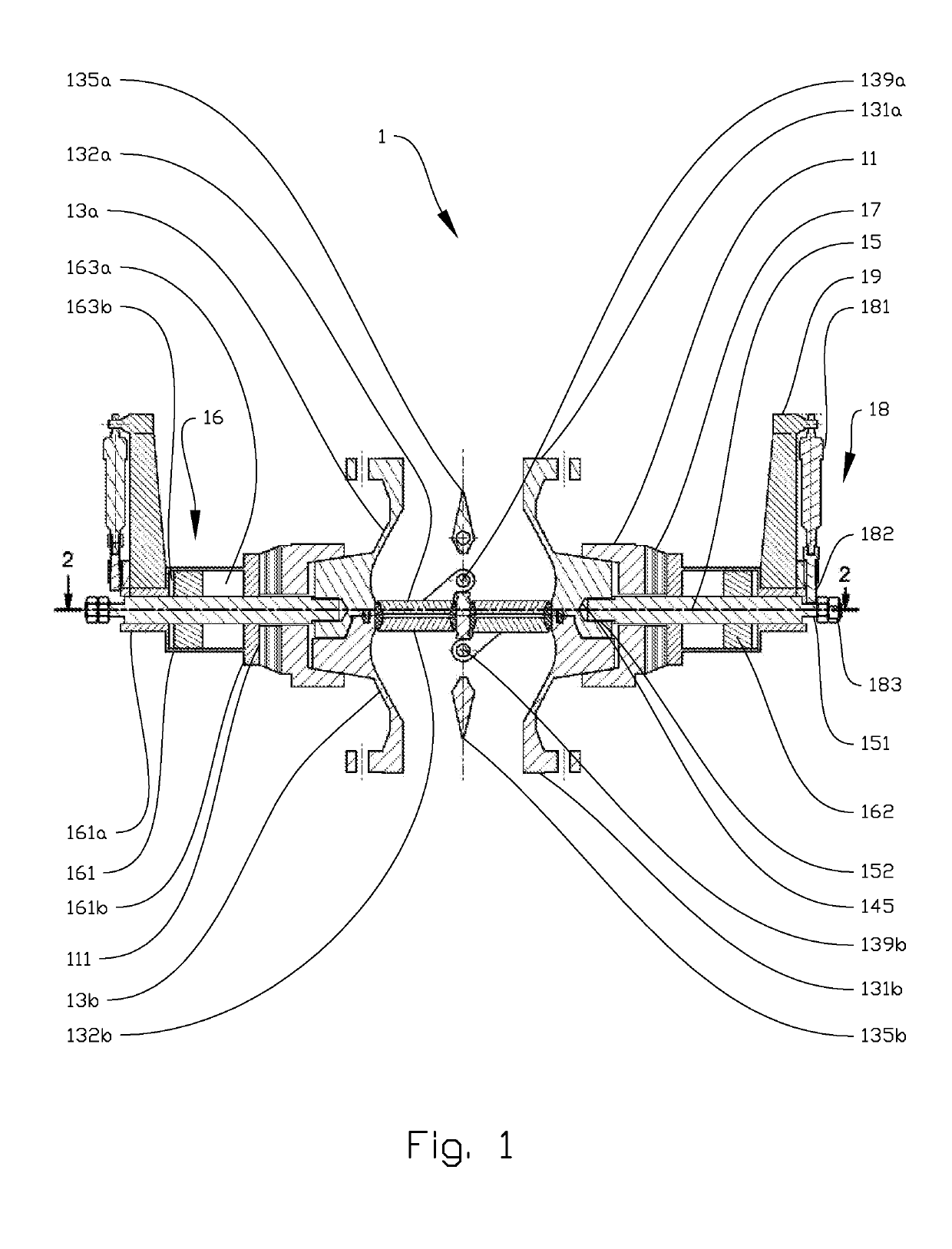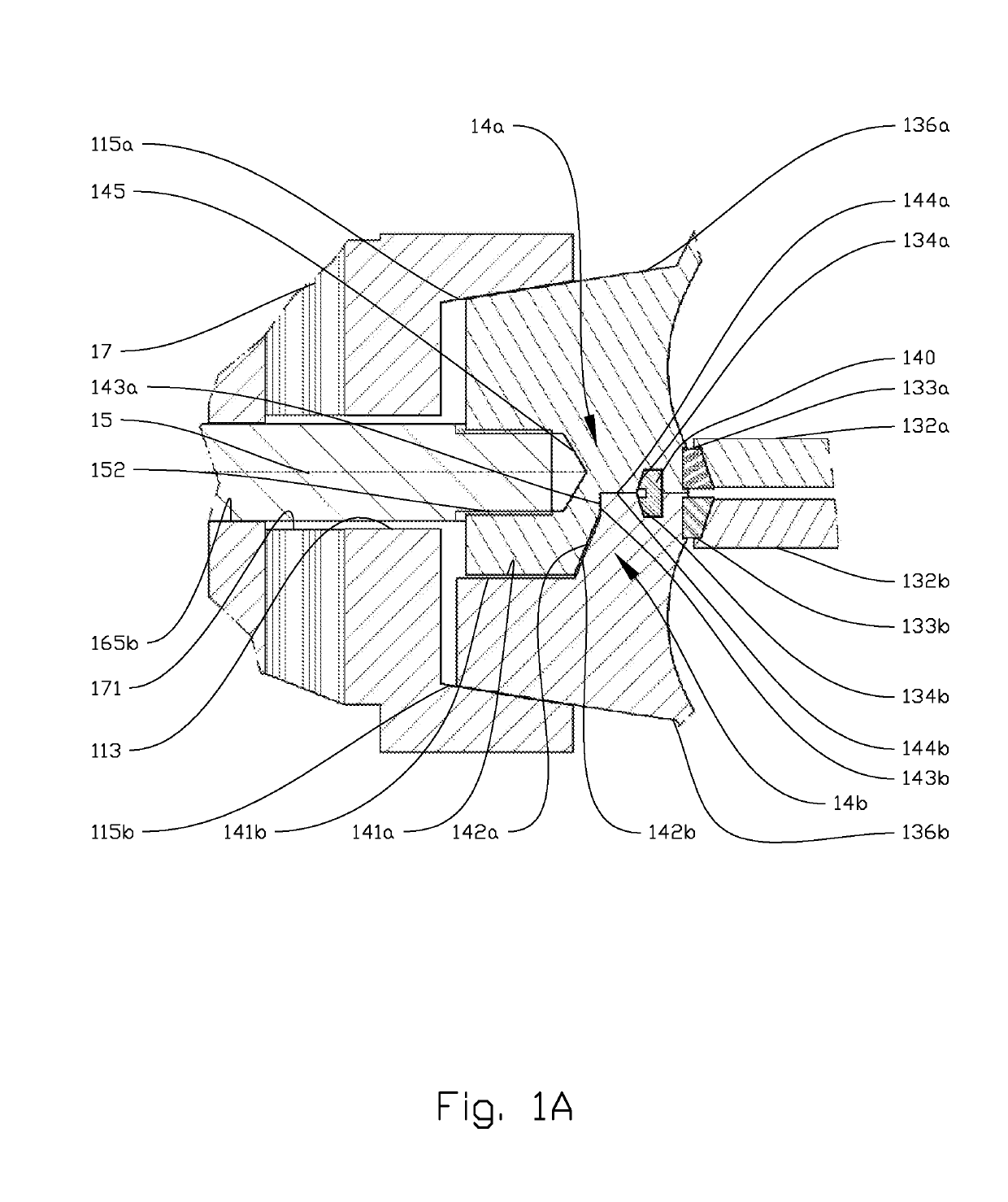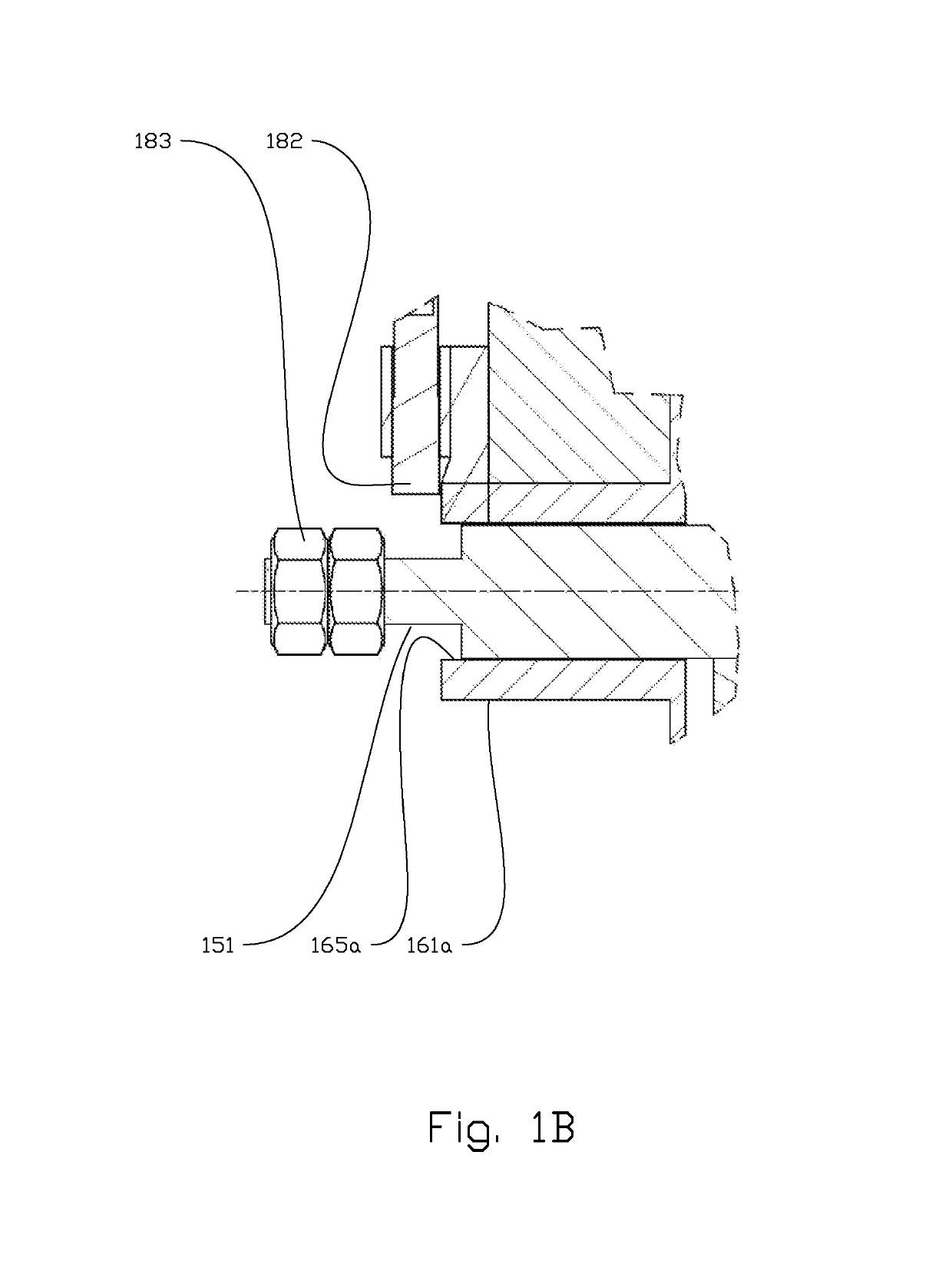Coupler device and method for using the same
a coupling device and coupling hub technology, applied in the direction of couplings, flanged joints, pipe joints, etc., can solve the problems of large bolts that require large and heavy pre-tensioning equipment, difficult handling, and large bore conduits
- Summary
- Abstract
- Description
- Claims
- Application Information
AI Technical Summary
Benefits of technology
Problems solved by technology
Method used
Image
Examples
Embodiment Construction
[0061]In the following, the reference numeral 1 denotes a coupler device made in accordance with principles disclosed herein. Identical reference numerals refer to identical or similar components. Most of the figures, except FIGS. 1A, 1B, are symmetrical or close symmetrical about one or two axes in the paper plane. For clarity and for avoiding too many reference numerals on each figure, identical or similar components are numbered only once per figure.
[0062]In FIG. 1, a cross-sectional side view of a coupler device 1 is shown. The coupler device 1 comprises a first connector hub 13a and a second connector hub 13b. The two connector hubs 13a, 13b are configured to be connected to first and second pipe bodies (not shown) by means of connection flanges 131a, 131b. The coupler device 1 of FIG. 1 is shown in a first position clamping the two connector hubs 13a, 13b together by means of a clamp comprising two spaced apart clamping members 11. The coupler device 1 further comprises two cl...
PUM
 Login to View More
Login to View More Abstract
Description
Claims
Application Information
 Login to View More
Login to View More - R&D
- Intellectual Property
- Life Sciences
- Materials
- Tech Scout
- Unparalleled Data Quality
- Higher Quality Content
- 60% Fewer Hallucinations
Browse by: Latest US Patents, China's latest patents, Technical Efficacy Thesaurus, Application Domain, Technology Topic, Popular Technical Reports.
© 2025 PatSnap. All rights reserved.Legal|Privacy policy|Modern Slavery Act Transparency Statement|Sitemap|About US| Contact US: help@patsnap.com



